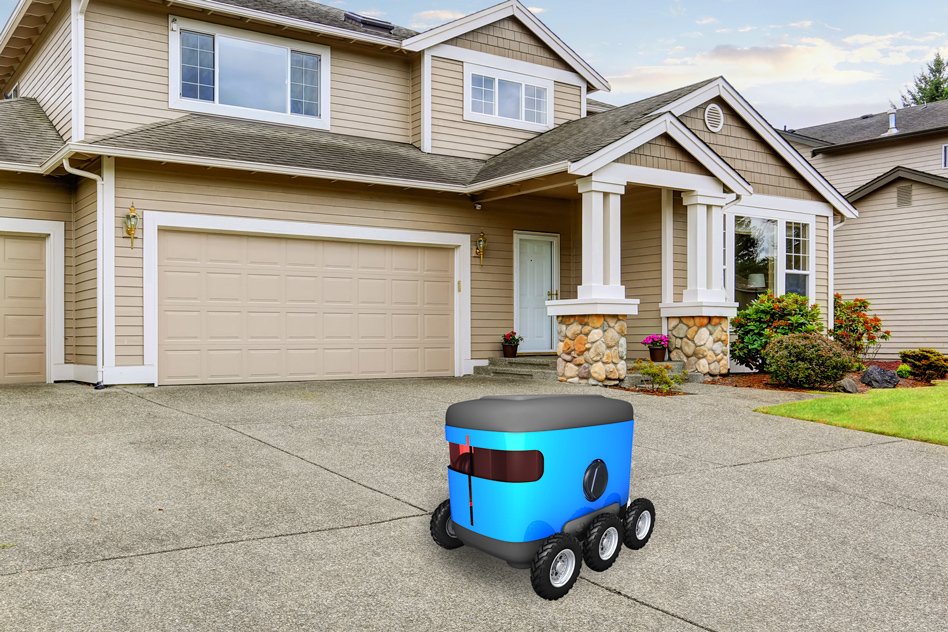As we delve deeper into the age of automation and artificial intelligence, the landscape of logistics and delivery is undergoing a significant transformation. One of the most compelling developments in recent times comes from the minds at the Massachusetts Institute of Technology (MIT). They’ve successfully designed a method that enables autonomous delivery robots to skillfully locate front doors—an advancement poised to revolutionize last-mile delivery.
The Challenge of Last-Mile Delivery
Last-mile delivery has long been a thorn in the side of logistics companies. While entire supply chains can be optimized, getting a package from a distribution center to a customer’s front door presents unique challenges. Traditional robots like the “wheeled cooler” garage-style models initially devised by Starship often stop at the curb, requiring human intervention to ferry packages the final few feet. But why? The crux of the issue lies in mapping.
Going Beyond Conventional Mapping
Mapping entire neighborhoods to pinpoint every home’s entrance is a monumental task, particularly when scaled at a national or global level. Not only is it time-consuming, but it is also fraught with inconsistencies. MIT’s researchers recognized this challenge and set about innovating a method that would enable robots to navigate environments without intricate pre-made maps.
Introducing the Cost-to-Go Map
The breakthrough from MIT is a variation of SLAM—simultaneous localization and mapping. However, instead of utilizing bulky semantic maps that label objects, they implemented a “cost-to-go” map. This intelligent mapping technique compiles data from training maps to create a heat map. The heat map indicates probable locations of front doors by evaluating the environment in real time. It allows the robot to efficiently plot a path toward the door based on surrounding cues—a significant leap from traditional methods.
The Human Touch: Learning from Experience
This approach mimics how humans recognize front doors. When approaching a new house, we intuitively compare it to our recollections of past experiences and use environmental cues to hypothesize its layout. MIT’s system enables robots to do just that! By processing visual and spatial data dynamically, these robots can become adept at navigating unfamiliar neighborhoods without the burden of exhaustive maps.
Broader Applications of Intelligent Local Environment Mapping
While last-mile delivery is an exciting application of this technology, the potential stretches far beyond just delivering packages. Intelligent mapping can aid in various sectors, including:
- Autonomous Vehicles: Cars could navigate complex urban environments with ease.
- Healthcare: Robots can assist in hospitals by locating specific departments or patient rooms.
- Warehouse Management: Robots could streamline inventory processes by identifying product locations swiftly.
The Road Ahead
With such innovative strides forward, commercial deployment of these autonomous delivery robots seems imminent. Companies are eagerly watching as this technology matures, which could lead to a significant shift in how goods reach consumers. The prospect of receiving packages right at our doorsteps, delivered by intelligent robots that can navigate dynamically, is an exciting one.
Conclusion
MIT’s breakthrough represents a monumental step toward fully integrating AI-powered delivery robots into our daily lives. The advancements in navigation, courtesy of the cost-to-go mapping technique, could not only change the landscape of logistics but also make our lives more convenient. As we continue to witness such leaps in technology, we become more aware of the exciting possibilities that lie ahead for autonomous systems.
At fxis.ai, we believe that such advancements are crucial for the future of AI, as they enable more comprehensive and effective solutions. Our team is continually exploring new methodologies to push the envelope in artificial intelligence, ensuring that our clients benefit from the latest technological innovations. For more insights, updates, or to collaborate on AI development projects, stay connected with fxis.ai.

